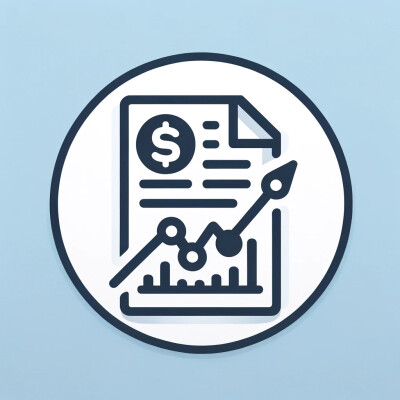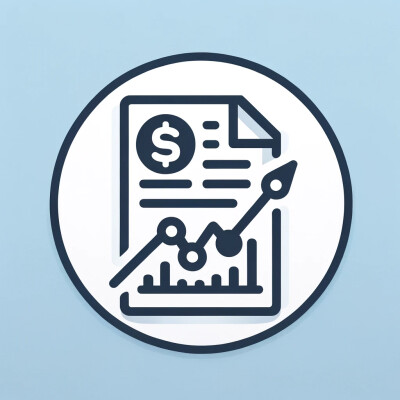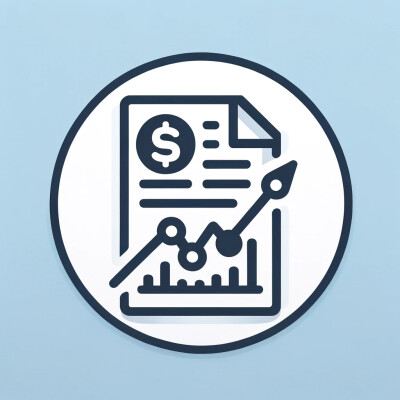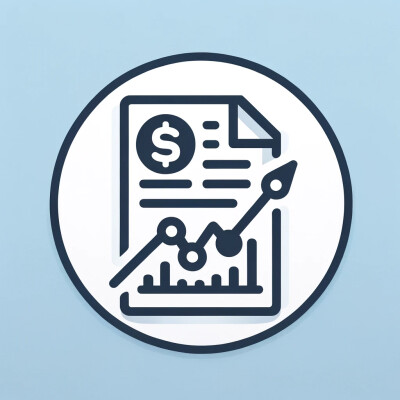- Speaker #0
Hello, welcome back to Papers with Backtest podcast. Today we dive into another algo trading research paper.
- Speaker #1
Yep, and today we're looking at momentum. It's a potentially powerful way to generate returns, but maybe not something every investor really thinks about day to day.
- Speaker #0
Exactly. We're basing this on a paper called Optimal Momentum, a Global Cross-Asset Approach by Gary Antonacci from back in 2011.
- Speaker #1
And our mission really is to pull out the practical stuff from Antonacci's work. We want to understand the trading rules he tested and crucially, what the backtest results actually showed.
- Speaker #0
Think of it as like a shortcut to getting your head around this whole momentum idea, which, you know, has some solid research behind it.
- Speaker #1
Definitely. And he didn't just use a little bit of data either.
- Speaker #0
No, he looked at ETF data, that's exchange traded funds, from 2002 right through to 2010.
- Speaker #1
And then to really stress test it, he went back even further using index data, 34 years worth from 1977 all the way to 2010. So. quite comprehensive.
- Speaker #0
Okay. So let's start at the beginning. What exactly is momentum when we talk about investing?
- Speaker #1
Well, in simple terms, it's this tendency, you know, investments that have been doing well recently, they often keep doing well. And the ones doing badly tend to keep doing badly for a period anyway.
- Speaker #0
Sometimes called relative strength investing, right?
- Speaker #1
That's another term for it. Yeah. And it's not actually a new idea. People might be surprised, but research goes way Cowles and Jones in 1937.
- Speaker #0
1937.
- Speaker #1
Wow. Yeah. They found that stocks doing well one year often did well the next. Then Levy in the 60s found similar things with shorter term data.
- Speaker #0
So it's got legs, academically speaking.
- Speaker #1
Oh, definitely. It really blew up in academic circles after the Jagadish and Titman paper in 93.
- Speaker #0
Right. I remember that one being pretty influential.
- Speaker #1
Hugely. They looked at like 1963 to 1990 data and showed that buying recent winners, say over the last six to 12 months, and selling recent losers, well, it generated... Pretty significant positive returns, profits that, you know, didn't really fit with the standard efficient market theories.
- Speaker #0
And those six to 12 month periods keep cropping up.
- Speaker #1
They do. It seems to be a consistent theme.
- Speaker #0
OK, so the core idea is winners keep winning. How does Antonacci translate that into specific trading rules in this paper? What's the look back period he focuses on?
- Speaker #1
He mostly settles on a six month look back period. So you rank assets based on how they performed over the last six months.
- Speaker #0
And why six months? Is there a specific reason?
- Speaker #1
Well, it lines up with a lot of the prior research, including Jagadish and Tippmann. The thinking sort of is that six months might balance things out, filters out some of the really short term noise, but still catches meaningful trends. Maybe less volatile than looking back, say, 12 months sometimes.
- Speaker #0
OK, makes sense. Capture the trend, not just the daily blips. Now, trading costs, always important. How are they handled?
- Speaker #1
Good question. Antinachi builds in estimated costs. He figures about 0.2 percent for. each switch between funds and the momentum portfolios. Right switch.
- Speaker #0
Okay.
- Speaker #1
And depending on how often the portfolio turns over, he calculates this reduces the annual ETF returns by somewhere between 0.39% and 0.53%. So it's factored into the results we'll talk about.
- Speaker #0
Right. So the returns are net of these costs. Yeah. Got it. And what are these momentum strategies being compared against? What are the benchmarks?
- Speaker #1
He uses a couple of main ones. First, the Russell 1000 ETF ticker IWB, which is, you know, a broad measure of the U.S. stock market.
- Speaker #0
Standard U.S. equity benchmark.
- Speaker #1
Okay. And second, the AQR momentum index. This one's interesting because it actually applies a momentum strategy itself, but to individual stocks. And it already has a 0.7% annual transaction cost estimate taken out.
- Speaker #0
So we're comparing against the general market and against another momentum approach. That's useful. Okay, let's get into this specific strategies Antonacci tested. First up was style momentum. What's that?
- Speaker #1
Right, the style portfolio. This used six iShares ETFs. They basically break down the U.S. market by large, mid, small caps, and then by style within those sizes, value versus growth.
- Speaker #0
So like large cap value, large cap growth, mid cap value, and so on. Six boxes total.
- Speaker #1
Exactly. The momentum strategy here would be look at those six over the past six months, see which ones did best, and invest in those top performers.
- Speaker #0
Okay. And how did that perform in the back test? This was 2003 to 2010?
- Speaker #1
Yes, January 2003 to December 2010. The style momentum portfolio got an annual return of 9.5%. Standard deviation was 18.3%.
- Speaker #0
And the Sharpe ratio, risk-adjusted return?
- Speaker #1
Sharpe was 0.39. And the maximum drawdown, oh, it was pretty hefty, minus
- Speaker #0
51%. 50% drawdown. Okay. How did just holding all six equally weighted do? No momentum timing, just buy and hold rebalanced.
- Speaker #1
Well, here's the interesting bit. The style equal weight portfolio actually did a bit better over this period. It returned 11.2% annually.
- Speaker #0
Higher return. Yep.
- Speaker #1
With slightly lower volatility too, 17.4% standard deviation. So the Sharpe ratio is better at 0.49. Drawdown was basically the same, minus 50.4%. Huh.
- Speaker #0
So for styles, just simple rebalancing actually beat the momentum strategy in this test period.
- Speaker #1
It did. Suggests maybe the benefits of regular rebalancing across styles outweighed the momentum effect here.
- Speaker #0
Interesting start. Okay. What about industries? Did momentum work better when applied across different sectors?
- Speaker #1
For industry momentum, he used nine select sector SPDR ETFs. You know, financials, tech, energy, health care, all those.
- Speaker #0
Standard industry sectors. And the results for momentum across those.
- Speaker #1
Again, looking at Jan 03 to Dec 10, industry momentum returned 9.3% per year. Standard deviation was lower this time, 15.3%. Sharpe ratio, 0.45.
- Speaker #0
And the drawdown for industry momentum.
- Speaker #1
A bit better than Stiles, but still significant. Minus 43.3%. Okay,
- Speaker #0
and the comparison. Equal weight across the nine sectors?
- Speaker #1
Same story, pretty much. The industry equal weight did slightly better again. Annual return of 10.0%, similar standard deviation at 15.2%, and a slightly higher sharp of 0.49.
- Speaker #0
Wow. Drawdown.
- Speaker #1
The equal weight drawdown was Megan at 49.2%, actually a bit worse than the momentum one in this case, but still. The overall risk-adjusted return favored equal weight slightly.
- Speaker #0
So two tests down, style and industry and simple equal weighting nudged ahead of momentum during this 2003-2010 period. Makes you think.
- Speaker #1
It does. Maybe momentum needs a broader playing field. Which brings us to the next test, geographic regions.
- Speaker #0
Right. Regions momentum. Yeah. This feels like it might be different. What regions were included?
- Speaker #1
He used four iShares ETFs for this. North America, the Russell 1000 again. Then Europe, S&P. Europe, 350. Japan, MSCI Japan. And finally, Pacific excluding the MSCI Pacific X Japan Index.
- Speaker #0
So a global perspective, basically. What did the numbers show here?
- Speaker #1
Now things get a bit more interesting for momentum, but also more volatile, maybe. The region's momentum portfolio, same 2003-2010 period, returned 12.0% annually.
- Speaker #0
Better return than style or industry momentum? Yes.
- Speaker #1
But the standard deviation was back up to 17.7%. Sharp-ray ratio was 0.52. And the maximum drawdown was still large, minus 54.3%.
- Speaker #0
OK, 12% return. How did equal weighting those four regions do?
- Speaker #1
Almost identical. The region's equal weight also returned 12.0%. Standard deviation, 17.8%. Sharp, 0.52. Drawdown, minus 54.2%. Basically the same results.
- Speaker #0
So for regions, it seems like the diversification itself was the main driver, not necessarily the momentum timing within those regions, at least in terms of the final outcome. Still very volatile, though.
- Speaker #1
That seems to be the takeaway from that part, yeah. High returns, but you had to stomach some serious swings. Which leads perfectly into the next really crucial step Antonacci takes. Which is? Integrating fixed income, but not just holding bonds separately.
- Speaker #0
How did he do it then?
- Speaker #1
He included U.S. Treasury ETFs, specifically IEF, which is intermediate term, like 7-10 years, and SHY, short term, 1-3 years inside the momentum selection universe.
- Speaker #0
Ah, so the bonds have to compete based on their momentum against the equity regions.
- Speaker #1
Exactly. If treasuries have had better momentum over the past six months than, say, European stocks, the strategy shifts into treasuries. It's tactical.
- Speaker #0
That's clutter. It's like an automatic flight to safety mechanism driven by momentum. What did that do to the results?
- Speaker #1
This is where it gets dramatic. The regions plus notes portfolio, so the four equity regions plus the two treasury ETFs, the annual return jumped 17.1%.
- Speaker #0
Wow, quite a jump. And the risk. The volatility.
- Speaker #1
That's the amazing part. Standard deviation dropped significantly down to 12.3%.
- Speaker #0
Much lower.
- Speaker #1
Which means the Sharpe ratio shot up to 1.12. And listen to this. The maximum drawdown wasn't minus 50-something percent anymore. It was just minus 12.1%.
- Speaker #0
Minus 12%. That's huge. A massive reduction in risk while increasing return.
- Speaker #1
Precisely. It shows how powerful adding that fixed income component dynamically based on momentum can be. It really smooths the ride. OK,
- Speaker #0
that's a really key finding. But he didn't stop there, did he? He added gold, too.
- Speaker #1
That's right. Gold is often seen as another diversifier, low correlation to stocks and bonds sometimes. So he added GLD, the SPDR Gold Shares ETF.
- Speaker #0
Using a proxy before GLD existed, I assume.
- Speaker #1
Yeah, based on London gold prices before November 2004 when GLD launched. So now the universe is the four equity regions. the two treasury ETFs, and gold.
- Speaker #0
And the results for regions plus NOS plus gold momentum, this is using data from when GLD started, right?
- Speaker #1
Correct. From GLD inception through to second 2010, annual return nudged up again to 18.8%. Standard deviation stayed low at 11.9%.
- Speaker #0
So the Sharpe ratio got even better.
- Speaker #1
Yep. Up to 1.29. And the maximum drawdown, even lower, minus 7.2%.
- Speaker #0
Minus 7%. That's incredibly low for an 18, 19% annualized return. That's a very attractive risk reward profile.
- Speaker #1
It really is. And Antinashi points out something striking. This portfolio, the regions plus notes plus gold won. It never had a negative year during the test period.
- Speaker #0
Not a single losing year.
- Speaker #1
Not in this ETF back test period. Think about 2008, the regions only portfolio was down, what, 37%?
- Speaker #0
Yeah, brutal year for equities.
- Speaker #1
But this diversified regions plus notes plus gold momentum portfolio was actually up nearly 10% in 2008.
- Speaker #0
That's incredible. It really shows the power of having those non-correlated assets like bonds and gold. Available in the momentum rotation.
- Speaker #1
Absolutely. It highlights how momentum can work not just for chasing returns, but also for dynamically managing risk across different asset classes.
- Speaker #0
OK, that's compelling using the ETF data from the 2000s. But you mentioned he also used much longer term index data back to 1977. How did the strategy hold up over that longer, more varied period?
- Speaker #1
Right. The robustness check. He used MSCI indices for the equities, Barclays Capital for the bonds, and Bundesbank gold prices. So 34 years of data.
- Speaker #0
And applying the same regions plus nose plus goal momentum strategy to this long term index data. What did that show?
- Speaker #1
Over that full 1977 to 2010 period, the annual return was 19.3 percent. Very consistent with the shorter ETF period.
- Speaker #0
And the risk profile?
- Speaker #1
Standard deviation was 15.2 percent, a bit higher than the ETF period, which isn't surprising given the longer time frame includes more diverse market events like the 87 crash. The Sharpe ratio was 0.81.
- Speaker #0
Still a strong Sharpe ratio. What about the maximum drawdown over those 34 years?
- Speaker #1
The maximum monthly drawdown reported was minus 25.2 percent. Definitely larger than the ETF period, but still quite manageable, especially compared to equities alone over that time.
- Speaker #0
OK, so 19 percent return, 0.81 Sharpe, negative 25 percent max drawdown over the long haul. How did that compare to just holding an equal weighted mix of all those same indices, equities, bonds? gold over the same 34 years.
- Speaker #1
Big difference. The equal weight portfolio returned 10.8% annually, significantly lower than the momentum strategy.
- Speaker #0
And the risk?
- Speaker #1
Standard deviation for equal weight was lower at 9.9%, which makes sense for a diversified buy and hold. But the Sharpe ratio is only 0.48, much lower than momentum's 0.81.
- Speaker #0
So much lower risk-adjusted return for the equal weight. What about its drawdown?
- Speaker #1
The equal weight maximum monthly drawdown was actually worse than the momentum strategies over the long term. minus 30.9%.
- Speaker #0
Interesting. So the momentum strategy delivered higher returns, much better risk adjusted returns, and a lower maximum drawdown compared to simple equal weighting over the very long run.
- Speaker #1
Exactly. It really reinforces the idea that this cross-asset momentum approach isn't just a short-term fluke. It seems to have offered substantial benefits over decades. He also notes the negative skewness was less bad for the momentum portfolio compared to equal weight, which risk-averse investors might prefer.
- Speaker #0
OK, so pulling this all together, what's the big takeaway message from Antonacci's paper on optimal momentum?
- Speaker #1
I think the core insight is that a pretty simple momentum rule looking back six months when applied across a globally diversified set of asset classes, not just stocks, but regions, bonds and gold. Well, it seems capable of generating really quite extraordinary risk adjusted returns.
- Speaker #0
And that key part seems to be including those diversifying assets like bonds and gold within the momentum rotation itself.
- Speaker #1
Absolutely. It turns momentum into a tool that not only seeks higher returns, but also actively manages risk by shifting towards assets like treasuries or gold when they show relative strength. It enhances diversification dynamically.
- Speaker #0
Really fascinating work. And it definitely gives you a lot to think about regarding portfolio construction.
- Speaker #1
For sure. Simple concept, powerful implementation when diversified.
- Speaker #0
Thank you for tuning in to Papers with Backtest podcast. We hope today's episode gave you useful insights. Join us next time as we break down more research. And for more papers and backtests, find us at https.paperswithbacktest.com. Happy trading.






